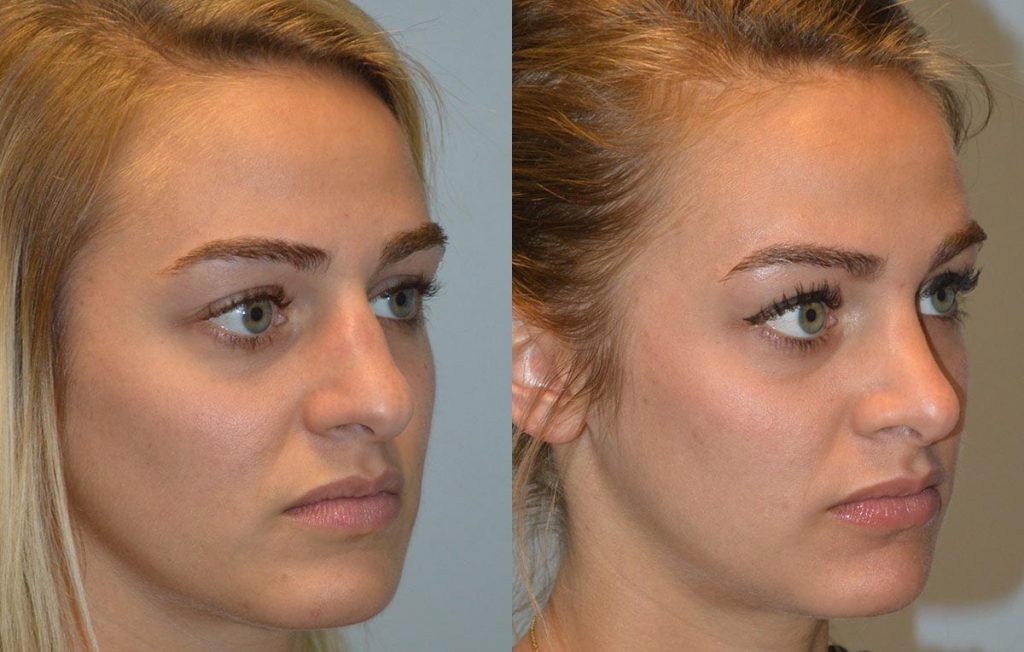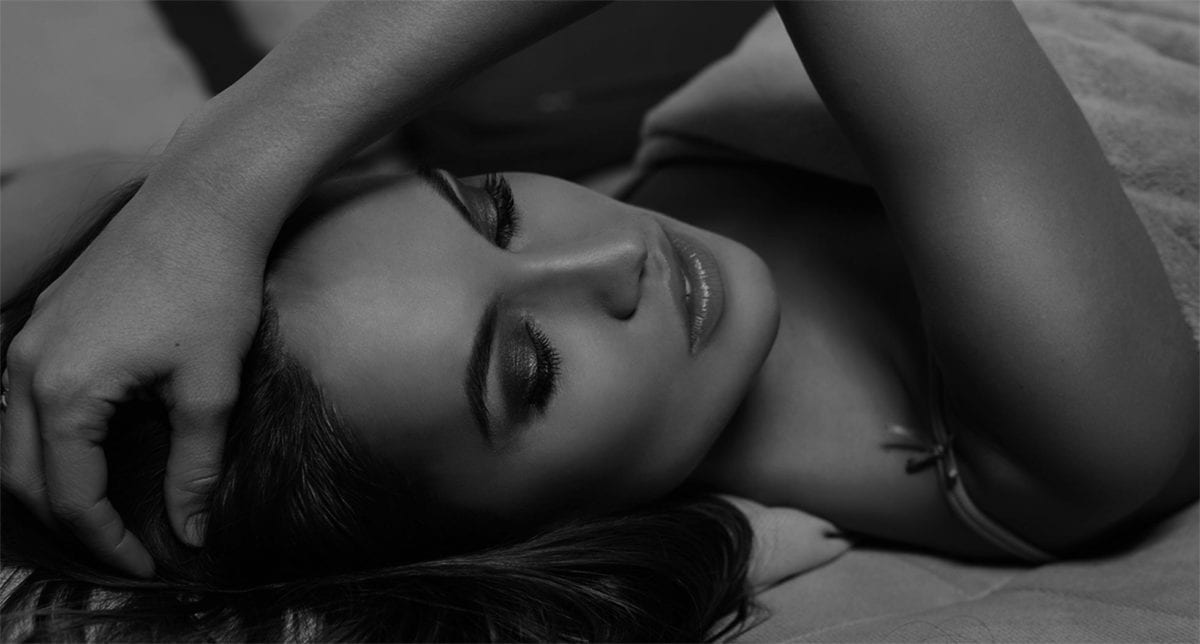How Do I Explain My Desired Nose Shape to My Cosmetic Surgeon?
Rhinoplasty, also called nose reshaping surgery, is an extremely powerful procedure. With the right surgeon, rhinoplasty can create balance and symmetry in the face, and help patients achieve the appearance they’ve always wanted. For these reasons, it consistently ranks as one of the most sought-after cosmetic procedures, with over 350,000 rhinoplasties performed in 2020 alone.
Though commonly performed, rhinoplasty requires both great surgical skill and excellent doctor-patient communication. If you’ve ever wondered how the best cosmetic surgeons deliver their patients’ desired rhinoplasty results, this blog is for you.
Communicate your desired results with your cosmetic surgeon
Stunning rhinoplasty results are dependent upon being able to effectively communicate your desired nose appearance with your surgeon—but, as you can imagine, it’s not easy to find the words to describe your ideal nose. One key to accurately conveying how you want your nose to look is understanding the different parts of the nose and common concerns corrected by rhinoplasty.
Nasal tip
An attractive nasal tip is critical to the overall appearance of one’s nose. When correcting a nasal tip with rhinoplasty, cosmetic surgeons consider 3 things: its size, shape, and projection. These characteristics are all determined by the appearance of two C-shaped pieces of cartilage that meet to form the nasal tip. This cartilage is more visible in some noses than others, and is responsible for any indentation, or “cleft,” in the nose. (Sandra Bullock is an example of someone with a mild cleft nose tip.) Most patients want their nasal tip to be the same height as their bridge, possibly even extending a bit beyond it.
Here are 3 of the most common nasal tips we correct at Maningas Cosmetic Surgery:
- Bulbous tip. This is a large, round nasal tip, disproportionately wider than the nasal bridge. A bulbous tip is often caused by very thick skin at the nasal tip. Patients requesting correction of a bulbous tip usually want a smaller, narrower, and/or flatter nasal tip that is more proportionate to their bridge.
- Button nose. This is a small, round tip that typically projects upwards from the bridge. Button noses are usually associated with a slightly scooped out bridge (sometimes referred to as a “ski jump” nose). Patients correct a button nose to achieve a straighter, flatter, more “refined” nose.
- Narrow or pointy tip. This is when the nasal tip may appear narrower and pointier than the bridge, giving the appearance of an overly-projected nose. A narrow or pointy nasal tip can also make the face appear pinched. Patients typically choose to widen a narrow or pointy tip to achieve a nose that is more proportionate to the width of their middle bridge (read more about the nasal bridge below).

This patient underwent a nose tip and bridge correction. Notice how her nose tip after rhinoplasty (pictured on the right) is slightly upturned and narrower. We also reduced the appearance of a “cleft” nose tip, creating a smoother, rounder tip. See more before and after rhinoplasty photos here.
Nasal bridge
The nasal bridge is the longest part of the nose. Each patient’s nasal bridge is different, and cosmetic surgeons must consider the size, shape, and projection of the bridge in relation to the nasal tip and the rest of the face.
The bridge begins between the eyebrows and extends to the nasal tip. It is typically divided into 2 parts:
- Upper bridge. The upper bridge is made of bone. It is widest between the eyebrows and typically narrows as it extends towards the middle bridge. The most common changes made to this area include reducing a dorsal hump, filling in an indented bridge, narrowing a wide bridge, or widening a narrow bridge. Most patients desire a straight, flat upper bridge, which is achieved by creating a smooth height transition from the area between the top of the nose & the forehead to the middle bridge (as seen in the before and after photos below).
View this post on Instagram
- Middle bridge. The middle bridge consists of cartilage running from the nasal bones to the nasal tip. Most patients desire a straight, flat middle bridge, which is achieved by creating a smooth transition from the cartilage in the middle bridge to the nasal bones in the upper bridge. The most often-corrected nasal deformity in this area is a dorsal hump, which is composed of cartilage and/or bone. (See the before and after photos below for an example of a dorsal hump reduction with a tip refinement.) Though a dorsal hump isn’t typically difficult to remove, it is imperative that your surgeon avoids removing too much cartilage or bone in this area, as this could create an indented appearance to the nose and could impair breathing.
Cosmetic surgeons can also correct a crooked bridge, which is where the nasal septum (the thin wall between the nasal passages) becomes displaced due to a deviated septum or injury.
View this post on Instagram
Nostrils
While the bridge tends to be the part of the nose that most patients wish to address with rhinoplasty, the nostrils can also have a major impact on your overall appearance. Rhinoplasty can correct nostrils that are overly wide (a.k.a. “flared nostrils”), overly narrow, or asymmetrical:
- Wide nostrils. To reduce the size of wide nostrils, your surgeon will remove nasal tissue, placing sutures as needed to adjust their position and shape.
- Narrow nostrils. To widen narrow nostrils, your surgeon may place a columellar strut to help enlarge the openings of the nostrils as needed. A strut is a type of graft used during rhinoplasty to add strength and structure to the nose. Grafts are typically made of cartilage from one’s septum, ear, or rib, or they can be made of a synthetic material.
- Asymmetrical nostrils. To correct asymmetrical nostrils, your surgeon may make incisions to reposition, reshape, widen, or narrow the nostrils, depending on your aesthetic goals.
Rhinoplasty must be customized for each patient
It’s important to understand that rhinoplasty is not a “one size fits all” procedure. A skilled cosmetic surgeon will reshape and/or resize your nose to meet your aesthetic desires and properly accentuate your face. He or she will also communicate with you what results can reasonably be expected. This is why it’s critical to choose an experienced, board certified cosmetic surgeon to perform your rhinoplasty.
Rhinoplasty in Joplin, Missouri
Dr. Talon Maningas is a triple board certified cosmetic surgeon with a decade of experience performing rhinoplasty. During a personal consultation, Dr. Maningas will help you communicate your desired nose shape, size, and position and determine if you’re a good candidate for rhinoplasty. Take the first step towards your new nose by scheduling an online consultation or calling (417) 437-0303.



